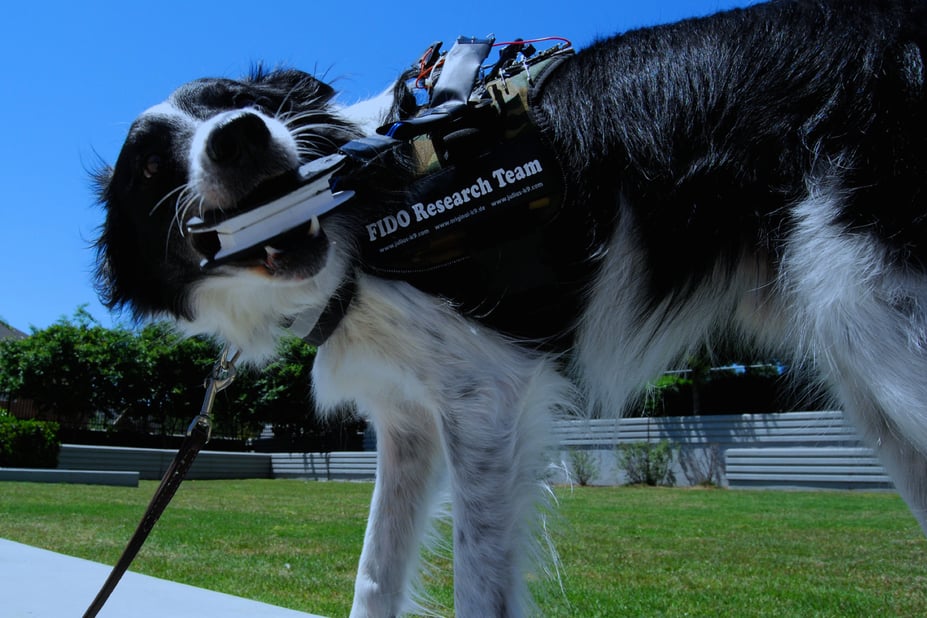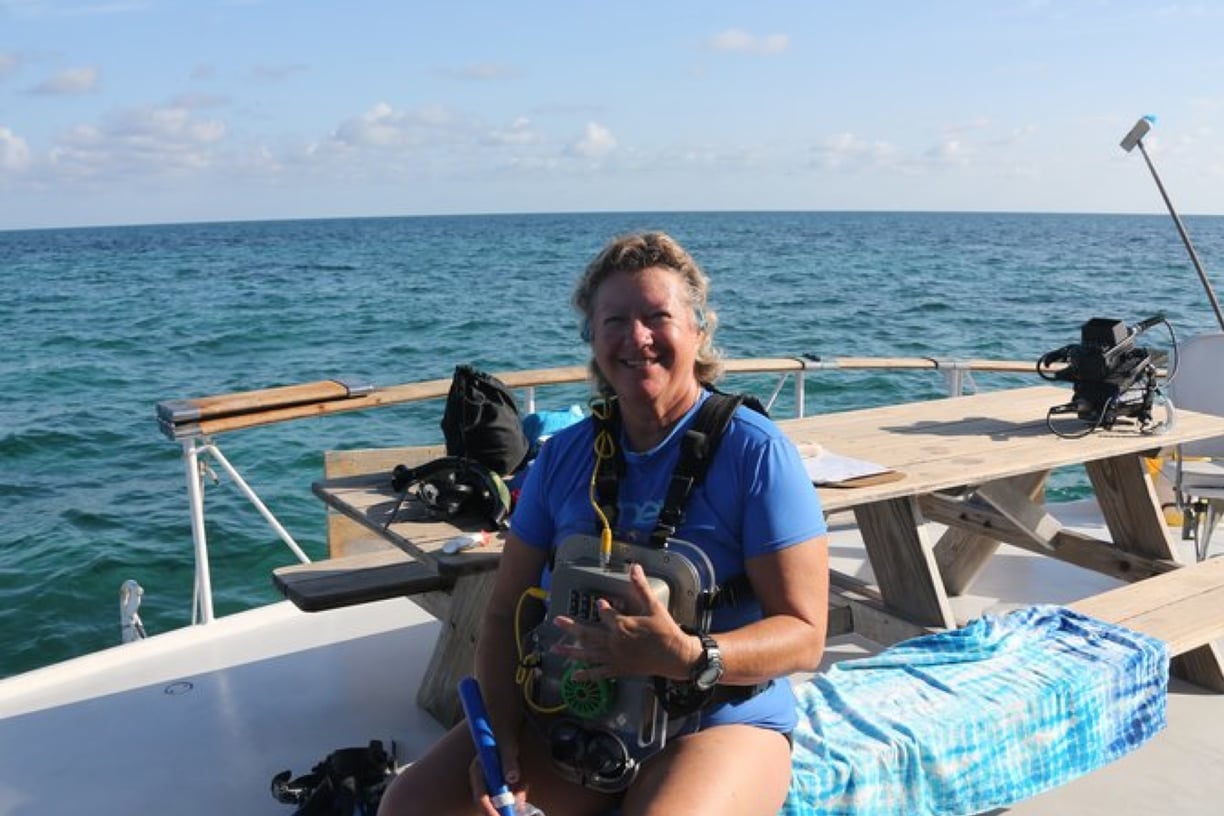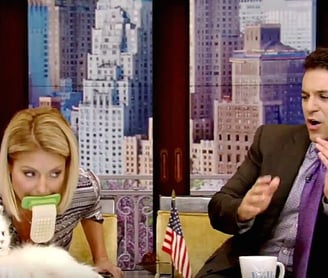Preliminary theses on the “interspecies interface.”
Graphite Admin
11/14/2016
img[1], Dog named Sky wearing the FIDO (“Facilitating Interactions for Dogs with Occupations”) bite sensor.
I would like to focus on the concept of the “interface,” and maybe derive some theory or other sort of reflection about it. Specifically, I’d like to think about the interspecies interface; this interface is the mediator that allows members of different species to communicate with one another. (Is it communication, really? No, or at least not necessarily. The action is more general than this. The interface allows members of different species to interface with one another, which may mean communication, but may mean something else as well.) In every example I have considered, the interface takes the form of a prosthesis, filling in the functional gaps that prevent interfacing in the first place.
Here I present three examples: The first example is a pair of high-tech prostheses developed by Georgia Tech to facilitate communication between humans and other mammals. One is called the FIDO for “Facilitating Interactions for Dogs with Occupations,” and the other is called the CHAT for “Cetacean Hearing and Telemetry.” As their names suggest, one is for communicating with guide dogs and police dogs (and other working dogs), and the other is for communicating with wild dolphins. Though they both have much in common, they each deploy different corporeal techniques and build upon different conceptions of what technology is.
img[2], Human scientist Denise Herzing wearing the CHAT “Cetacean Hearing and Telemetry” human-dolphin interface.
The second example is the “GoatMan” suit developed by the speculative designer Thomas Thwaites. This suit was built by Thwaites to allow him to take “a holiday from being human.” So what it does is it allows him to temporarily stop being a human, and to then be a goat instead. The details of what “being a goat” entails are interesting— apparently, they involve standing like a goat by wearing goatlike prosthetic limbs, and eating grass like a goat by using a goatlike prosthetic stomach. There is more to it but that is all I will mention for now.
The third and final example is a product made by the company PDX Pet Design called the LICKI Brush, a prosthetic cat tongue that humans use to lick their cats. The idea is that the prostheses are dry and rough in a way a cat’s tongue is, and so they allow the human to engage in a form of sociality that is most proper to the cat.
img[3] GoatMan Thomas Thwaites walking with goats in his prosthetic goat suit.
img[3] GoatMan Thomas Thwaites walking with goats in his prosthetic goat suit.
img[4] Human media personality Kelly Ripa using the LICKI Brush on a cat.
These are all the examples I will invoke for now. There are other multispecies interfaces besides these, and not all of them are so surreal or high-tech, nor do they all involve mammals. Nonetheless, for now I figure it may be good to limit my considerations to just these objects. What they all share with one another—and what they will help me think through—are problematics of interfacing and encounter across ontologically significant difference. By this I mean that they each pose certain questions and give certain answers in regards to what it may mean for members of different species to encounter one another in all of their difference or “significant otherness,” as Donna Haraway has put it. At stake in each of these encounters are the following questions: What are members of different species in relation to one another? What does relationship/encounter/interfacing do to the being of each species engaged in the process? What possibilities are there for new prosthetic interventions within relations (ways of relating or interfacing) or ontologies (ways of being), and what effect may those possibilities have on our sense of ethical responsibility?
related texts and ephemera: When Species Meet by Donna Haraway (2008) / The Wild Dolphin Project / The Prosthetic Impulse ed. Marquard Smith and Joanne Morra (2005)








